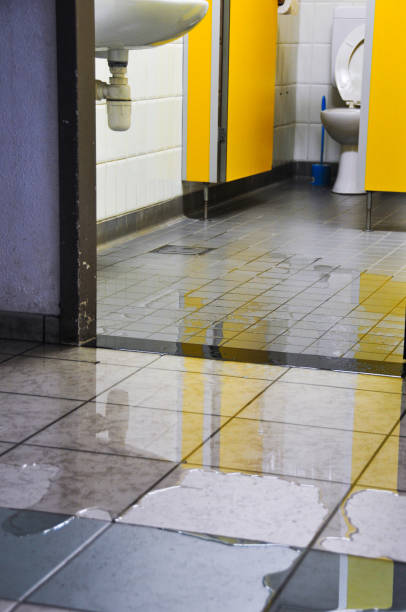This post down below relating to How to Repair and Prevent Bathroom Water Damage? is rather enlightening. Have a go and make your own personal results.

Water damage often occurs in the bathroom due to the water utilized day-to-day. Sometimes, the damage could be a little mold and mildew from the shower. Other times, it's large damages on your floor. Whatever it is, it is constantly excellent to know the reason and avoid it prior to it happens.
This guide will certainly experience some of the typical reasons for water damage in the washroom. We will certainly also examine what you can do to avoid these reasons from damaging your bathroom. Allow's dive in.
These are the common reasons you would certainly have water damage in your shower rooms and also how you can spot them:
Excess Wetness
It's great to have that long shower as well as splash water while you dance around as well as imitate you're doing, yet sometimes these acts could cause water damage to your restroom.
Sprinkling water around can trigger water to visit edges as well as create mold and mildews. See just how you spread out excess dampness around, and when you do it, clean it up to prevent damages.
Splits in your wall surface floor tiles
Washroom wall surface floor tiles have actually been particularly made for that purpose. They protect the wall from wetness from individuals taking showers. Nevertheless, they are not indestructible.
Sometimes, your bathroom wall surface floor tiles split as well as allow some wetness to permeate right into the wall surface. This can possibly damage the wall surface if you do not take any type of action. If you discover a fracture on your wall ceramic tiles, fix it right away. Don't wait up until it destroys your wall.
Overflowing toilets and sinks
As humans, sometimes we make blunders that can create some water damage in the shower room. For instance, leaving your sink faucet on might cause overflowing and damages to other parts of the restroom with moisture.
Additionally, a damaged commode might trigger overflowing. For example, a damaged bathroom manage or other parts of the cistern. When this takes place, it can damage the floor.
As soon as you see an overruning sink or bathroom, call a plumbing to help deal with it quickly.
Ruptured or Leaking Pipes
There are several pipelines bring water to different parts of your washroom. Some pipelines take water to the toilet, the sink, the faucets, the shower, and also numerous other areas. They crisscross the little area of the bathroom.
Occasionally, these pipelines could obtain rusty and also ruptured. Other times, human activity could create them to leakage. When this happens, you'll locate water in the edges of your restroom or on the wall surface.
To identify this, look out for gurgling walls, mold and mildews, or mildew. Call a professional emergency situation plumbing to repair this when it occurs.
Roof Leakages
Sometimes, the trouble of water damage to the bathroom could not come from the washroom. For instance, a roof leakage could trigger damages to the restroom ceiling. You can detect the damage done by checking out the water spots on the ceiling.
If you locate water stains on your ceiling, inspect the roof to see if it's damaged. After that, call a professional to assist address the issue.
Final thought
Water damage to your washroom can be irritating. Nonetheless, you can handle it if you avoid some of the reasons stated in this guide. Call an expert emergency situation plumber if you discover any serious damages.
How to Prevent Water Damage in Your Bathroom?
Water damage repair is an expensive, meticulous, and lengthy process. Unfortunately, bathrooms are the most susceptible rooms to water damage due to toilets, showers, and sinks. Pipes and fixtures wear out over time and are not immune to damage. But all is not lost, as there are ways to prevent water damage from occurring in your bathroom.
Check Your Plumbing
Nothing lasts forever, especially pipes, which can rust and begin leaking over time. You should periodically conduct pipe inspections and pay attention for any musty smells or water stains that may indicate you need water damage repair. Here are some things to check:
Frequently test valves for your toilet, shower, and sink to ensure they are properly working. Check faucet supply lines hidden under vanities and replace when needed. Replace cracked or deteriorating caulking along sinks, tubs, and showers. If you notice a clog in your sink, call in a professional. Since you can’t check the pipes in the wall, keep an eye out for stains, drywall bubbling, musty smells, and excess moisture; if the bathroom is on a second level, check the ceiling of the room directly below for these signs. Don’t Overwork Your Toilet
One of the most common reasons bathrooms need water damage repair is due to overflowing toilets. Save yourself the hassle of cleanup by being mindful and not pushing your toilet to extreme limits. If you have young children, it is especially important to keep an eye on them when they are in the bathroom and to teach them how to avoid clogging the toilet. Here are some more tips to help prevent your toilet from overflowing:
If you have a septic tank, only use septic-safe toilet paper Do not flush anything down the toilet besides toilet paper; items like diapers and sanitary napkins will clog the piping Pay attention to your toilet’s water level: If it’s low, it could mean it is partially clogged or that there is a crack in the toilet bowl https://www.alure.com/home-improvements-blog/resources/how-to-prevent-water-damage-in-your-bathroom

I recently found that page on How to Repair and Prevent Bathroom Water Damage? while doing research the search engines. Sharing is nice. You won't know, you might be doing someone a favor. Thank you for going through it.
Request A Quote